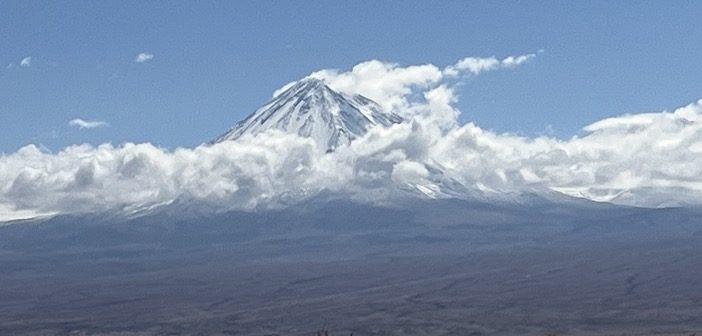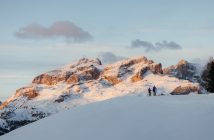As Douglas Adams said of Space, the Atacama is big – really big. It is some 41,000 square miles (49,000 if you include the lower reaches of the Andes) and on a high plateau (altiplano) where the plain sits between 8000-1200ft and the mountains are much, much higher – 20,000ft is the norm. It is, arguably (there are other candidates) the driest place on the planet. The average rainfall is 15mm (0.6in) a year but there are places in the desert where no rainfall has ever been recorded.
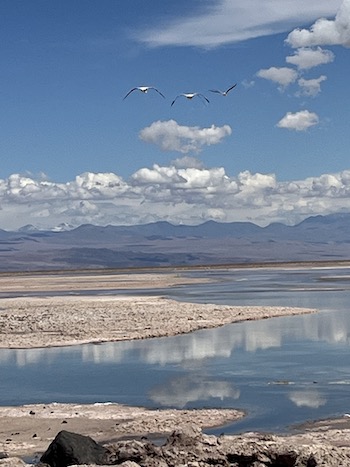 The reason for such aridity is simple geography. It sits between the Andes and the Chilean Coast Range of mountains that prevent rain coming in from either the Pacific or the Atlantic. In fact – and indeed fiction – the Atacama is the place on earth most closely resembling Mars and has stood in for the red planet in Space Odyssey: Voyage to the Planets as well as being used to recreate the Martian environment for NASA instrument tests.
The reason for such aridity is simple geography. It sits between the Andes and the Chilean Coast Range of mountains that prevent rain coming in from either the Pacific or the Atlantic. In fact – and indeed fiction – the Atacama is the place on earth most closely resembling Mars and has stood in for the red planet in Space Odyssey: Voyage to the Planets as well as being used to recreate the Martian environment for NASA instrument tests.
So, a great empty dead space? You couldn’t be more wrong. The Atacama has a quite dramatic beauty all its own and a surprising amount of life. There are salt flats full of flamingos. There are foxes and mice (Darwin’s leaf-eared, to be precise) and llamas, guanacos and vicuñas in the scrubby, more grassy areas. Storm petrels – a sea bird, if ever there was one – come to the Atacama to nest, perhaps because here they don’t have to fear any predators.
And then, of course, there’s man. The Incas ruled here before the Spanish conquistadores came but these were both latecomers. The Chinchorro culture was here long before, from around 7000BC, in fact. Rather like the Egyptian practice (but older), they mummified their dead and buried them with elaborate funerary practices (you can see the mummies in the coastal town of Arica). Today, the Atacameño live in the altiplano and have been here for around 1500 years, mostly living around San Pedro de Atacama which is the place to stay – an oasis in every sense.
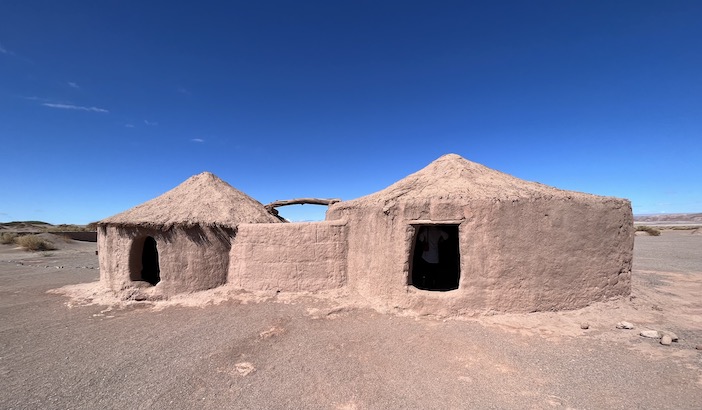
San Pedro (elevation 2407m, almost twice the summit of Ben Nevis) is built pretty much entirely of adobe (clay, water, straw and occasional animal bones) with straw roofs – they don’t have to worry too much about rain in these parts. I stayed at the Hotel Altiplanico which makes the most of the oasis with beautiful gardens. You don’t look for 5* luxury in the desert but you certainly find bucketloads of charm and authenticity here. The whole town has a slightly hippyish, laidback atmosphere and there are plenty of craft shops and good restaurants – I particularly liked Jardin Meraki, set in another lovely garden.
The town is a good base for exploring the desert. There are, of course, the famous Nazca Lines – geoglyphs incised into the earth that have had more than their fair share of attributed myths, but are generally believed to have been made around 500BC-500AD – and may have had a religious significance or simply been ancient signposts. The Nazca lines themselves are best seen from the air but there are many geoglyphic representations of animals, birds and people that you can see with the naked eye from the desert itself.
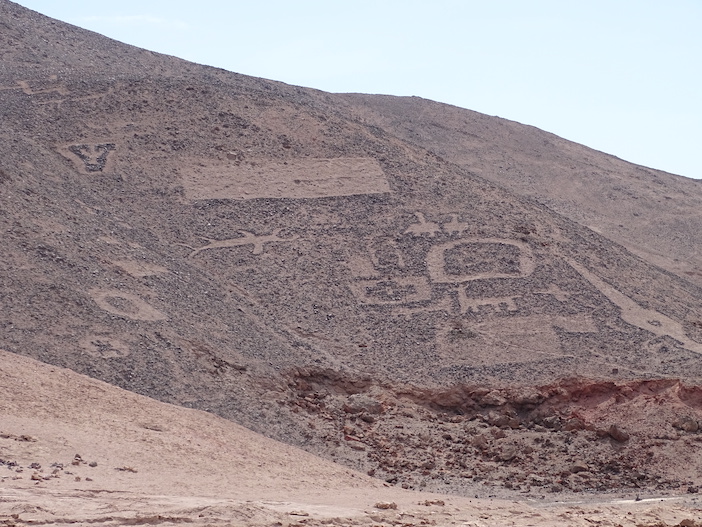
There are more settled signs of life out in the desert, too. Tulor was a settlement of circular adobe houses, all connected to each other with tiny patios and dating from around 380BC. The Pukara de Quitor is a fort built by the Atacameño about 900 years ago just a few miles from town. Built on a strategic hill above a river, it took the Spanish 20 years to capture it. Later settlements include the ghost town of Humberstone, a late 19th century community created for the extraction of saltpetre and now a UNESCO World Heritage Site. With its old cooking pots, liquor store and forgotten shoes, it looks like it was abandoned yesterday.
It is probably, though, the natural sights that will draw you to Atacama: the long line of 12 volcanoes, including the perfect cone of Licancabur; El Tatio, a geyser field with over 80 active geysers; the Puritama Hot Springs; the Valle de la Luna (Valley of the Moon with the ruins of old Chilean salt mines); the Valle de la Muerte (Death Valley) with its gigantic dunes; and the vast salt flats (Salar de Atacama) that stretch some 3000 sq km and include the Chaxas Lagoon with its flamingo reserve.
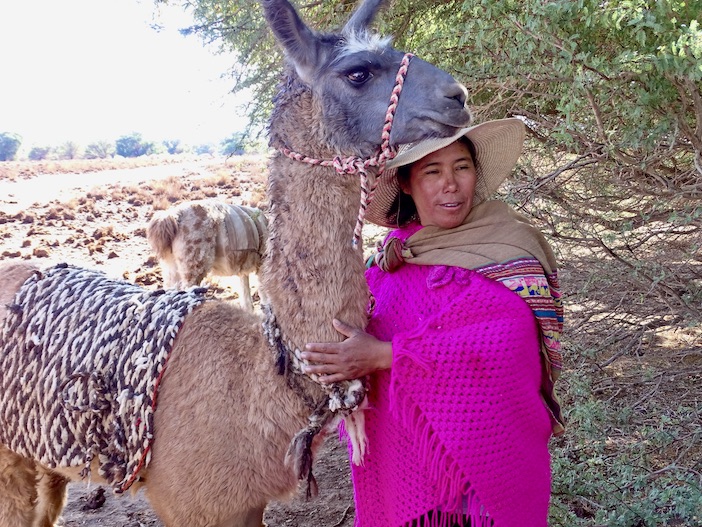
You can even spend a day on a llama farm and take some of the family’s pet llamas for a walk – this is a very tranquil experience as llamas turn out to be surprisingly calm and affectionate creatures. They like a bit of nuzzling. A word of warning, though, for any vegans. If you stay for lunch with the family, you’re guaranteed to be offered the local delicacy: llama steak, what else?
For more information and inspiration for visiting Chile and the Atacama, please visit the official tourism website at www.chile.travel.
Photos by the author

